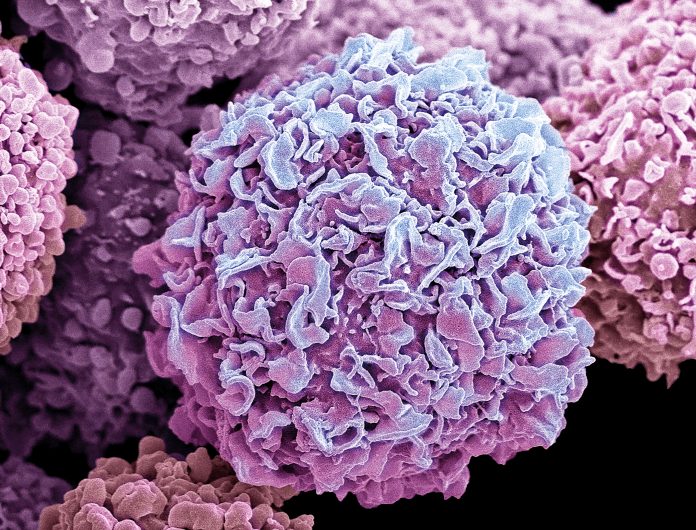
Scientists at the University of Illinois at Urbana-Champaign report they have identified a protein that is a key driver of cancer cell necrosis. Their mouse study, published in the journal Cancer Research, demonstrates that TRPM4 plays a pivotal role in promoting necrosis and suggests that treatments that promote necrosis may improve immunotherapies against solid tumors and other challenging cancers.
“Several emerging therapies kill cancer cells primarily by inducing necrosis,” the researchers wrote. “As necrosis activates immune cells, potentially, uncovering the molecular drivers of anticancer therapy–induced necrosis could reveal approaches for enhancing immunotherapy efficacy. To identify necrosis-associated genes, we performed a genome-wide CRISPR-Cas9 screen with negative selection against necrosis-inducing preclinical agents BHPI and conducted follow-on experiments with ErSO. The screen identified transient receptor potential melastatin member 4 (TRPM4), a calcium-activated, ATP-inhibited, sodium-selective plasma membrane channel.”
“Most anticancer drugs cause cancer cells to shrivel up and die in a controlled process known as apoptosis. But apoptosis does not usually strongly activate immune cells,” said David Shapiro, PhD, a professor of biochemistry at the University of Illinois Urbana-Champaign who led the research with former graduate student Santanu Ghosh. “However, a few emerging cancer therapies cause cancer cells to swell up and burst. The protein we identified, a sodium-ion channel known as TRPM4, is critical for cancer therapies that promote this type of cell death, called necrosis.”
Unlike apoptosis, necrosis strongly signals the immune system to target and clean up the remains of the dying cells, Shapiro said. “This suggests that treatments that promote necrosis may improve immunotherapies against solid tumors,” he said.
TRPM4 is the first protein mediator of anticancer therapy-induced necrosis to be described, Shapiro said.
Shapiro and study co-author Paul Hergenrother and their colleagues previously developed two drugs, a compound called BHPI and ErSO that spur necrosis in solid tumors, shrinking and often eradicating primary and metastatic tumors in mice.
To identify the relevant proteins, Shapiro and his colleagues screened breast cancer cells by knocking out each of the roughly 20,000 individual genes in the cancer cells and then treating the altered cells with BHPI or ErSO. Cells that resisted treatments revealed which genes were essential to the drugs’ effectiveness.
The researchers were surprised to find that TRPM4 emerged as a key driver of the process of necrosis in cancer cells treated with ErSO and BHPI. The team also found that TRPM4 was important for the activity of several other necrosis-inducing cancer therapies.
“This will enable physicians to identify patients most likely to benefit from necrosis-inducing therapies because their cancers have high TRPM4 levels,” Shapiro said.
Further study revealed that an ErSO-induced increase in intracellular calcium causes the TRPM4 channel to open, allowing sodium ions and water to flow into the cell. The influx causes the cell to swell, rupture, and leak, activating immune cells and causing them to rush to the site of the dead cells.
“Cancer treatment has been transformed by immunotherapy, which takes the brakes off immune cells, enabling them to attack cancer cells,” Shapiro said. “But immunotherapy has had limited success against solid tumors such as ER-positive breast cancer and pancreatic cancer.”
By targeting the TRPM4 pathway in solid tumors, scientists may further enhance the necrosis-inducing anticancer therapies available to fight such tumors, he said.
“We found that the cancer drug ErSO acts like the starter on a car that turns over the engine and then is no longer needed once the engine is running,” Ghosh said. “It is the swelling caused by TRPM4 that drives the lethal stress that kills the cancer cells. As little as a one-hour exposure to ErSO effectively killed cancer cells days later.”













